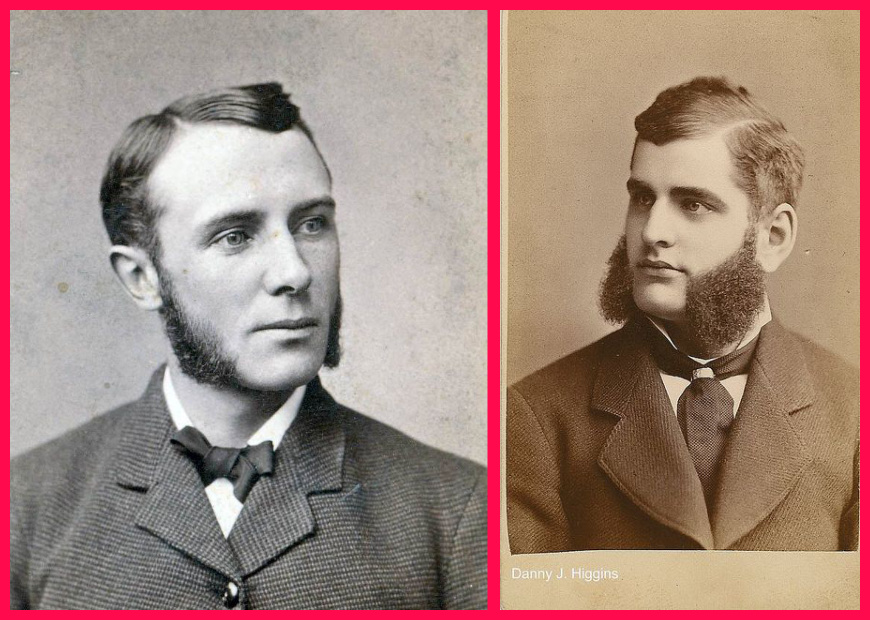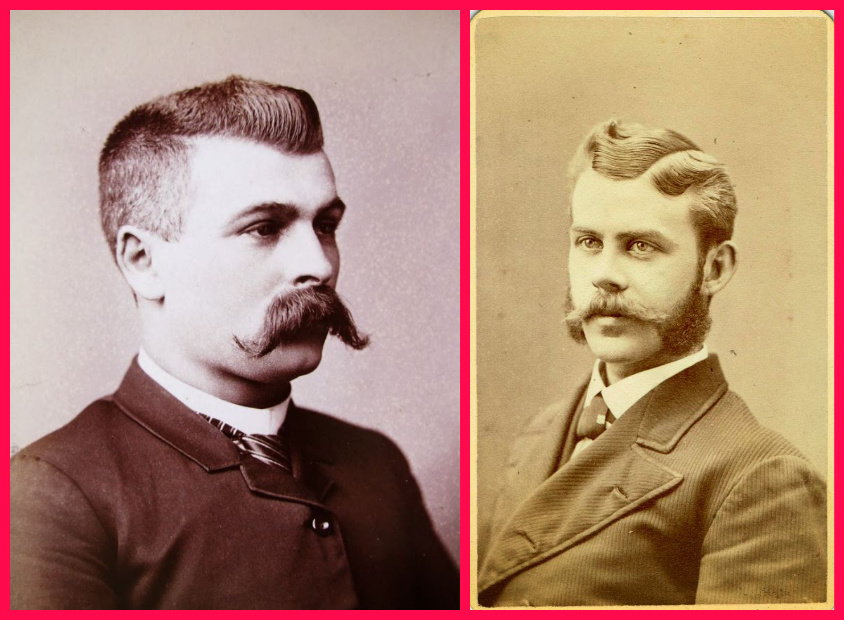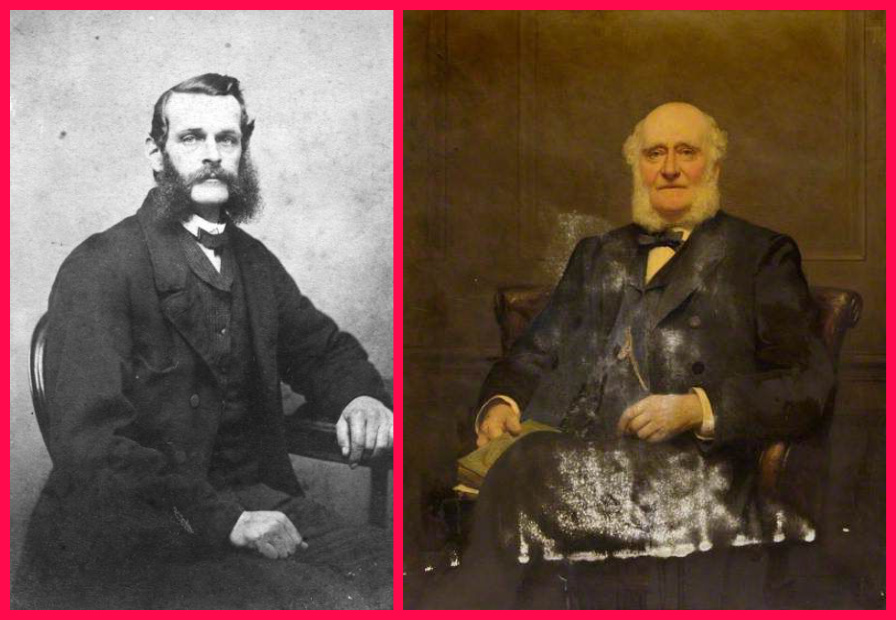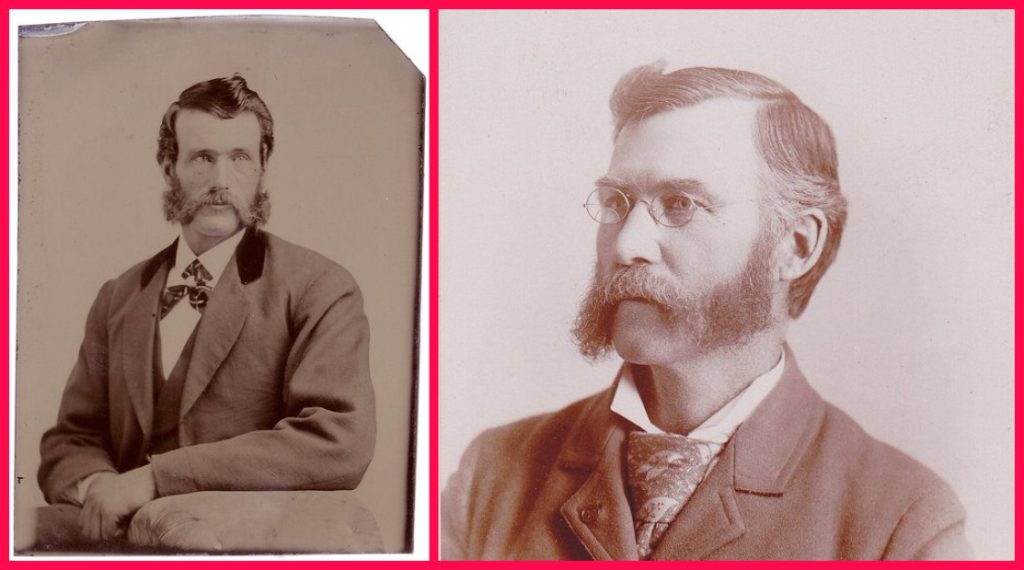Victorian hairstyles for men came in a wide variety, ranging from classical to distinctly modern. In this article, we’ll explore side-whiskers, sideburns, and mustache styles. The Victorians’ love for facial hair also inspired Gibson girl hairstyles. These hairstyles resembled those of the Roman Emperor, Titus. However, they were not as common as the Gibson girl look.
Victorian Men’s Sideburns
Despite the Victorians’ penchant for short hair on the top and back, they also sported sideburns, sometimes very long, and often paired with facial hair. Often reminiscent of Ambrose Burnside’s mutton chops, Victorian men’s sideburns were elaborate extensions of the gentleman’s overall hairstyle. But, sideburns were out of favor by the turn of the 20th century.
During the Victorian era, men’s hairstyles began to change. They wore their hair short and parted on the side, and sometimes combed it up away from their face. Victorians were more likely to wear a mustache than a sideburn. But, men were also more likely to sport a long beard, if it was allowed by their employers. The Victorians’ sideburns are a wonderful example of how men’s hairstyles changed over time.
The late Victorian period marked a period of great change in facial hair fashion. Men took their cues from classical art, which encouraged natural looks with few artificial products. The era’s most famous example is Beau Brummel, who had a short sideburn and a clean shaved face. The famous beautician had him check his face every morning in a dentist mirror, and plucked any stray hairs with a tweezer. Regency men wore either short or long sideburns, and rarely wore mustaches.
Despite the emergence of men’s sideburns in the late 19th century, Victorian men maintained a hirsute appearance. The aesthetes, on the other hand, considered a clean-shaved face as more aesthetic. As a result, Victorian men developed a variety of side-whiskers known as Piccadilly weepers and Dundrearys. Despite the fact that men were more often male than female, this style of hair could be combined with a mustache and a fringed beard.
Victorian Men’s Mustache
A Victorian men’s mustache was not uncommon in the 1800s, but its style was unique. Victorian men were known to have beards and thin mustaches. Women, on the other hand, preferred men with beards. Victorians also favored the unshaven look. Here’s a look at the history of the Victorian men’s mustache. Let’s find out what a Victorian man wore under his beard.
A Victorian man’s appearance became an increasingly important part of his persona. A tamed mustache was an important symbol of manhood. It affirmed manhood and asserted self-control. However, men didn’t want to over-groom or risk indecency. A properly groomed mustache merged the two. A Victorian men’s mustache was both clean-shaven and full-bearded.
A Victorian gentleman’s mustache was often adorned with a small earring. It was most flattering to a young man’s vanity, making him appear older. Even a twenty-year-old who wears a mustache will seem much older than he actually is. Victorians were also very social, and the mustache was the norm for men in society. Menservants were required to shave, but officers and subalterns wore mustaches adorned with different regiments.
Victorian Men’s Side-Whiskers
Victorian men began wearing side-whiskers during the nineteenth century when they were considered more masculine. In addition to being a fashionable fashion accessory, side-whiskers could also be combed and worn with a mustache. Victorian men wore a variety of mustaches, some long and straight, while others were curled. In the early to mid-twentieth century, men also wore full beards, which were bushy and often trimmed in a variety of ways.
During the late 1860s and 1870s, most men presented a hirsute appearance. The aesthetes thought that a clean-shaven face gave a fastidious appearance, so sideburns were allowed to develop into various types of side-whiskers, including bushy mutton-chop’ whiskers and long and combed-out whiskers. Side-whiskers were also known as Piccadilly weepers or Dundrearys, after the Lord Dundreary from Tom Taylor’s play.
The earliest stage of Victorian men’s side-whiskers arose around the turn of the nineteenth century, and canny traders peddled fake whiskers. Meanwhile, women often trained their locks down their faces and tied them under their chins. Then, in the 1840s, men began growing mustaches, a common fashion accessory for soldiers in the British army. And as the decade wore on, men began to grow side-whiskers in order to resemble British cavalry soldiers.
Victorian Men’s Mutton Chops
Victorian men’s mutton chops can be both thick and bushy or clipped to a neat edge by the jaw. They can also be eccentrically eccentric, with long, thick tendrils flowing midway down the chest. Alternatively, they can be short and separate from the mustache, adding a dashing look to the older gentleman’s otherwise weathered features. Victorian mutton chops are also popular among rock musicians, who are known to have been inspired by the style.
The Victorian era saw a resurgence of facial hair, including mutton chops. These men’s sideburns, which were typically long and thick, had become more pronounced than they are today. The sideburns were sometimes called “side whiskers” because they hung down below the jawline. Victorian men’s sideburns eventually fell out of style in the early twentieth century, but not until World War I. World War I brought with it a requirement that men be clean-shaven in order to wear a gas mask. However, this rule did not apply to mustaches.
Victorian Men’s Sideburns With Chin Strip Shaved Off
Despite the popularity of the Victorian era’s chin strip piercing, men shaved off their chins without shaving their sideburns. This style of shaved facial hair has its roots in military style. Muskets shoot large amounts of gunpowder, leaving behind embers in the pan. Because the sideburns protected the face from these fires, they were used to prevent burns. Throughout the Victorian era, men maintained very long, thick beards, while others chose to shave them off.
After the Victorian era, men began to reduce their facial hair. The elites often shaved their faces at least three times per week, while working-class men may only have shaved their faces a few times a year. However, a new trend began to emerge during the early nineteenth century. This style of facial hair, also known as a side-whisker, lasted for two decades. Eventually, the bushy outcrops became a popular style. Sometimes, they were ridiculed by the press but often admired by admirers.
Beards became popular during the Victorian era. Many soldiers fought in the Civil War, and many did not shave their beards. However, a government committee recommended that men expose themselves to dust grow beards to improve their health. The era was also marked by gender identity issues. Victorians wanted to show their independence, and a beard was a symbol of manliness.
FAQ
What Are The Victorian Hairstyles Names?
During the Victorian era, hairstyles were very different from those of today. For example, Victorian women did not typically wear their hair loosely. But they did occasionally wear it in waves or with flowers.




